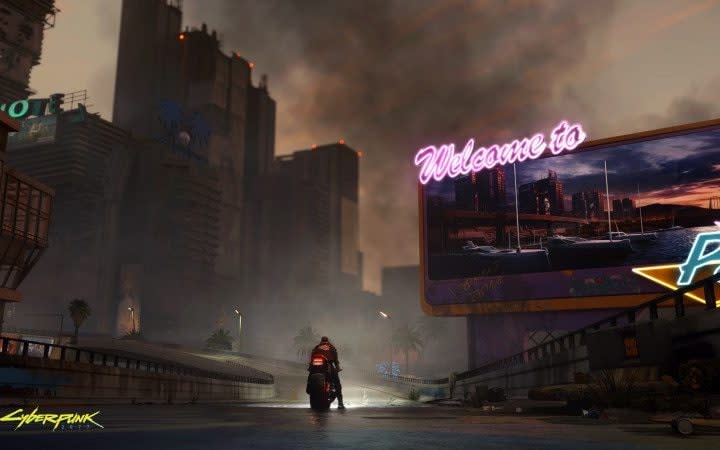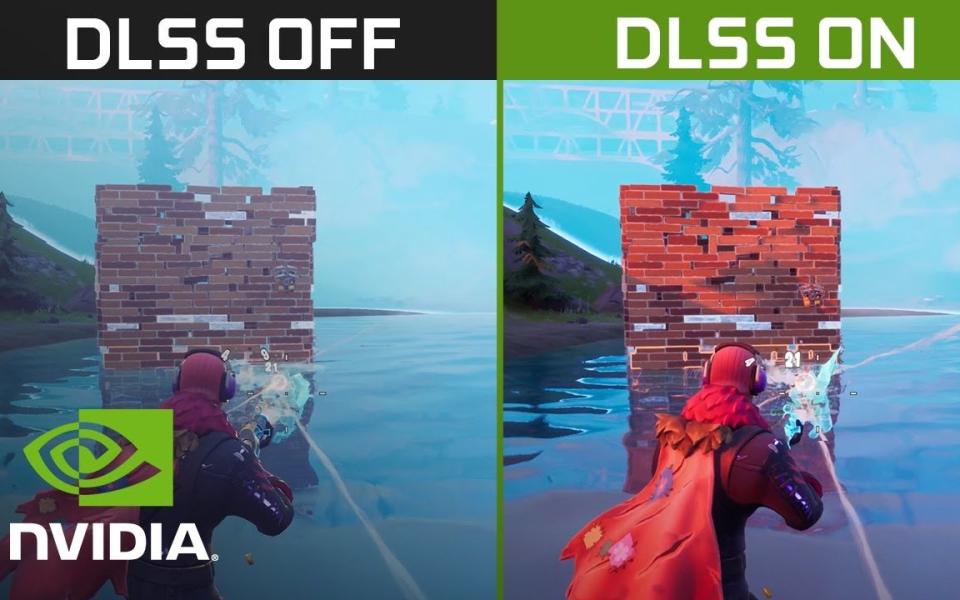What is DLSS, Nvidia’s ‘magic’ gaming technology and driver of US giant’s graphics business?

Anyone with a passing interest in video games will be aware of the acronym-peppered minefield that comes with the territory. It takes some doing to know your GPUs from your CPUs, your AI from your AA and even your FPS (frames-per-second) from your, well, FPS (first-person shooter).
The latest collection of letters causing a stir comes from graphics chip giant Nvidia. DLSS --or deep-learning super-sampling-- has been on the tip of everyone’s tongue as it starts to make its influence felt throughout the industry. It has just been announced that DLSS will help boost the graphical prowess of Activision’s hugely popular Call of Duty: Warzone for PC players, while rumours abound that it will also power the visual boost in Nintendo’s as yet unannounced Switch console upgrade.
But what is DLSS? And what impact is it set to have on the industry? At its heart, it is an artificial intelligence technology that improves the performance of your gaming machines beyond the hardware’s in-built capability. Nvidia’s new RTX graphics chips (or GPUs) will initially render a game’s image at a lower resolution, taking pressure off the hardware, before DLSS uses AI to ‘fill in the gaps’ and upscale the image, making it sharper and more detailed when it appears on your screen.
With the demands on the hardware reduced, it means that games can run at higher frame-rates for faster action and enable fancy graphic effects such as ray-tracing which hugely improves lighting and shadow. Ray-tracing has also garnered much attention as the most significant step forward in real-time graphics over the past few years, but the demand it places on hardware is partly the reason for Nvidia developing DLSS.
“Ray tracing -- or tracing the path of light across a 3D scene -- has been a breakthrough in the quality of real-time graphics, but places steep processing demands on the GPU for each pixel rendered,” says Nvidia’s Vice President of Platform Marketing, Jason Paul. “Our high-end RTX GPUs can now deliver high frame rates without DLSS in a number of situations. But what DLSS really enables is better frame rates and higher resolutions across a wider range of GPUs.”
I can testify to the impact of the technology on some modern games. It allowed me to run Cyberpunk 2077 at a solid frame-rate with full ray-tracing and graphical effects at 4K resolution. A level of performance that my PC’s graphics card has no business attempting on its own specifications. Upon announcing the update for Call of Duty, Nvidia are claiming a 70pc boost in 4K performance.

As an emerging technology, it is far from perfect. Not every game can support DLSS --though the number has been steadily increasing via software updates since its debut in 2018-- while the performance enhancements can vary wildly across different titles. And it is unlikely that a software solution such as this could ever outperform the highest-end hardware. Although some games, such as Fortnite, can arguably look better as the AI fills in more detail than would be rendered natively.
But even at its least pronounced, the improvements offered by DLSS are preferable to turning down the settings or suffering through choppy frame-rates. And it has notably sped up graphical advancements and increased the number of players looking to invest in PC gaming.
“DLSS is like a time machine for GPUs,” says Paul. “What would have only been possible two years from now in terms of resolution, frame rate, and graphics fidelity is possible today. Game developers are able to push the state-of-the-art, and gamers are able to enjoy the next generation of graphics now. From a business perspective, this has driven very strong demand for our GPUs.”
Indeed, demand has been such that producers such as Nvidia and rivals AMD have struggled to keep up. Along with the difficulty of procuring a PS5 or Xbox Series X console, it is equally as tough to buy state of the art graphics cards, leading to gamers paying hugely inflated prices or stuck in waiting lists for months. This is exacerbated by cryptocurrency miners buying up GPUs to help them farm Bitcoin and Ethereum.
"Demand is off the charts," Nvidia's chief financial officer, Colette Kress, said during CES 2020. "Our overall capacity has not been able to keep up".
But while it struggles to meet demand, companies like Nvidia look to be going from strength to strength, with initiatives like DLSS at the heart of it. After building its empire on PC gaming, the Californian company recently moved to acquire British chipmaker Arm for $40bn from Softbank. A takeover delayed by an investigation by the Competition and Markets Authority (CMA) around “competition, jurisdiction and national security”.
Nevertheless, Nvidia continues to push on with DLSS as a key driver in its main business. The company made a record $5bn in revenue last quarter and expects to repeat the feat even amongst the shortage. And as DLSS comes into further prominence with modern games, it will only continue to improve as its algorithms are bolstered in time and more developers are able to incorporate it in their games.

“Nvidia’s supercomputer is continuously training the DLSS AI to enhance performance and image quality, which we then rollout to users via new Game Ready Drivers,” says Paul. “We are also making DLSS easier for game developers to integrate in even more games. In February, we released a DLSS plugin for Unreal Engine 4. And just this month, we announced that the Unity game engine will soon integrate a plug-in. This gives many thousands of developers a fast, easy way to integrate DLSS.”
There have also been reports that Nintendo are planning on an upgraded version of its successful Switch console, which will use an Nvidia chipset and DLSS. The rumoured ‘Switch Pro’ will reportedly use the technique to enable games to be played at 4K resolution when the device is connected to a television. While neither Nintendo or Nvidia will have offered official comment on the new device, there is nothing technical tying DLSS exclusively to PCs in the long-term.
“Beyond needing the RTX GPU’s dedicated AI processor cores to speed up execution, there is nothing inherent in the DLSS algorithm that limits the technology to the PC platform,” says Paul, adding that Nvidia’s cloud gaming platform, GeForce Now, uses DLSS.
As is always the case in the fast-moving games industry, Nvidia is unlikely to have it all their own way with this kind of technology for much longer. Rival AMD are looking to release its own equivalent to DLSS for its Radeon line of GPUs, named FidelityFX Super Resolution (FSR), which AMD claims will improve performance without the need for machine learning. However, the company admits there is still work to be done before its own solution is ready later this year.
“DLSS has been one of the tougher problems, and took us several iterations to get right,” says Paul. “It has required many smart engineers, massive amounts of graphics data trained on an incredibly fast supercomputer and a whole lot of failing and trying again. We first introduced DLSS in 2018 and there is still no real alternative to it today -- this says something about the difficulty of the problem. This is as close to magic as I’ve seen from a gaming technology.”
It’s not just gaming either, with Paul saying that DLSS can accelerate rendering in other applications ranging such as virtual production and architectural visualization. While the lessons learned from the technology’s deep learning has helped Nvidia’s research into real-time AI networks. As the company looks to broaden its remit, including with the Arm purchase and a move into mobile computing, its gaming interests continue to be its primary driving force.

 Yahoo Finance
Yahoo Finance 